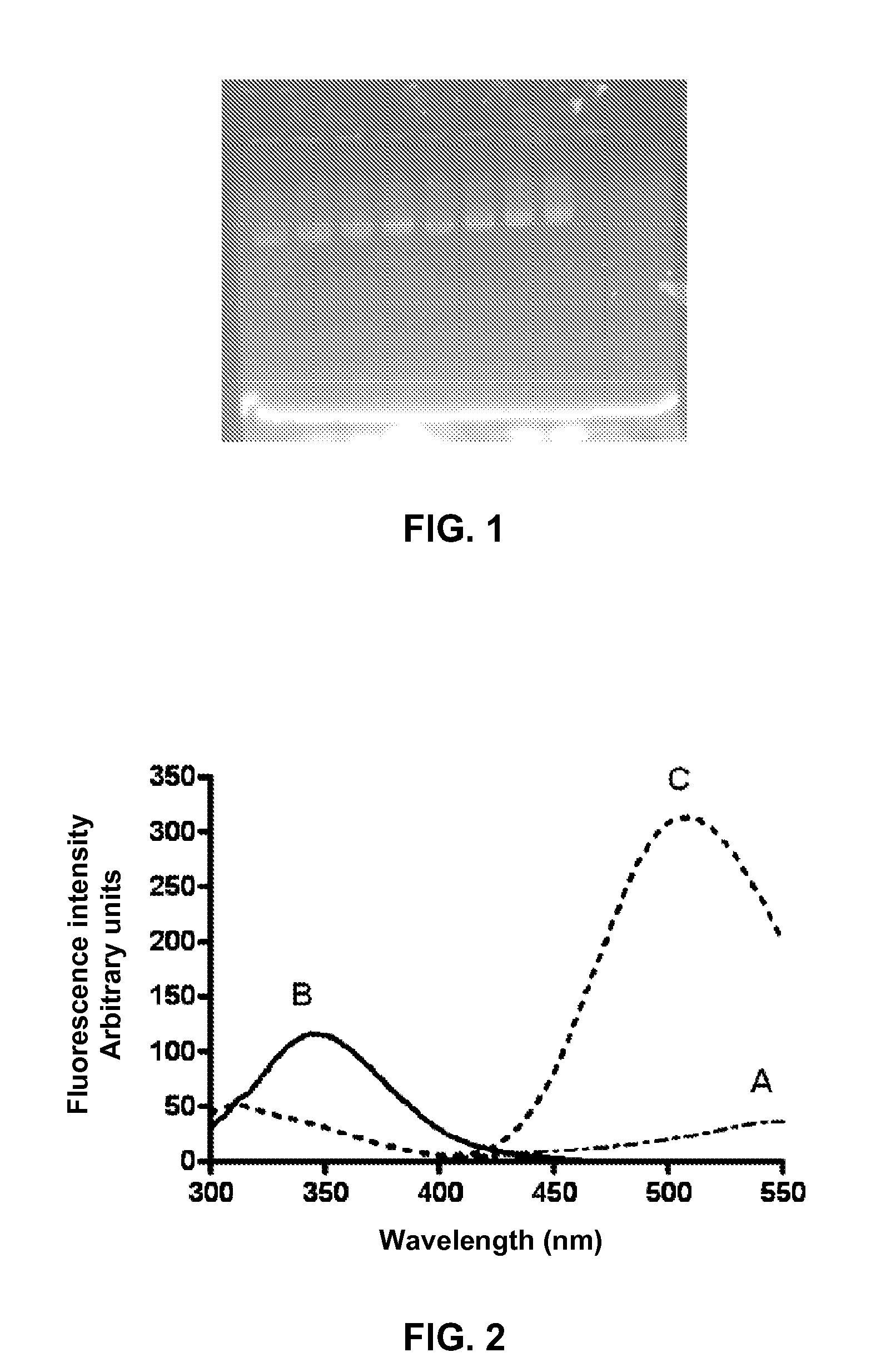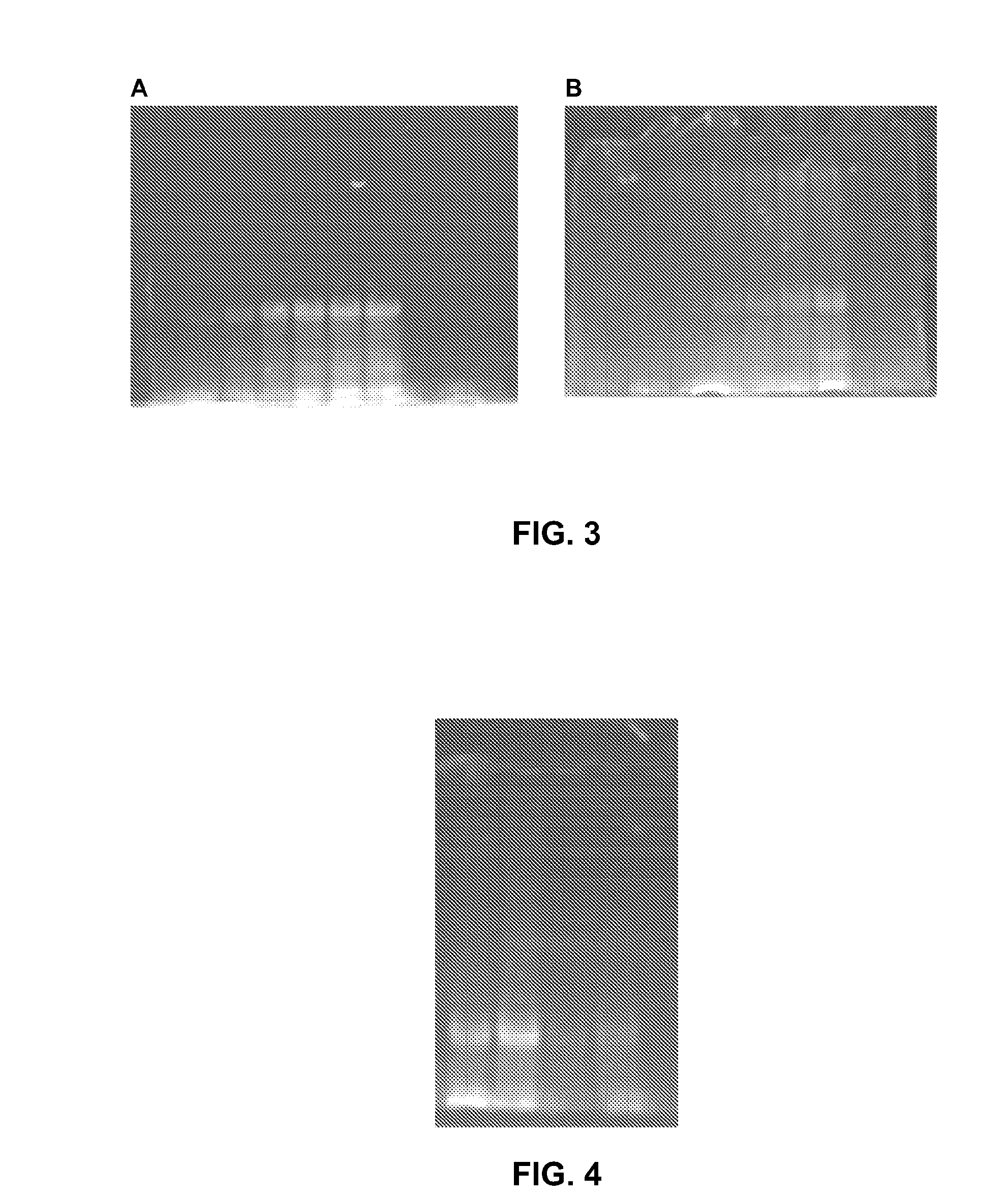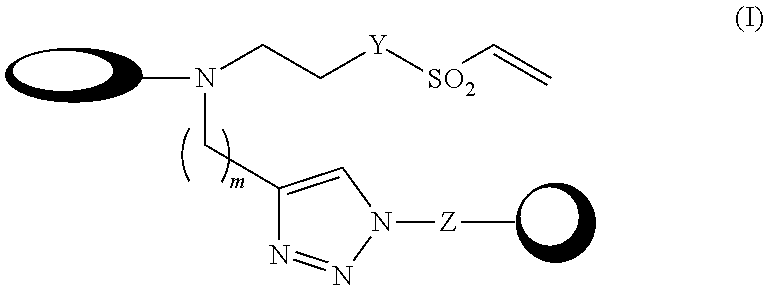Double-labelling agents based on vinyl sulphone
a technology of vinyl sulphone and labeling agent, applied in the field of double labeling agent based on vinyl sulphone, can solve the problems of inconvenient succinimidyl esters, low solubility, reactive and unstable in aqueous means, etc., and achieves a high efficiency and simple manner.
- Summary
- Abstract
- Description
- Claims
- Application Information
AI Technical Summary
Benefits of technology
Problems solved by technology
Method used
Image
Examples
example 1
Synthesis of Vinyl Sulphones Containing Propargyl Groups and Secondary Amines. Compounds of General Formula (II)
[0079]
[0080]Compound 3: DVS 1(1.6 mL, 16 mmol) and t-BuOK (119 mg, 1.1 mmol) were added to a solution of ethylene glycol 2 (330 mg, 5.3 mmol) in THF (100 mL). The reaction mixture was left at room temperature (30 min.) the solvent was eliminated by vacuum evaporation. The crude obtained was purified by column chromatography (AcOEt-hexane 2:1 to 3:1) obtaining 3 as a syrup (800 mg, 51%).
[0081]Compound 5: Propargylamine 4 (51 mg, 0.93 mmol) was added to a dissolution of 3 (414 mg, 1.4 mmol) in CH2Cl2-isopropanol 2:1. The reaction mixture was left at room temperature (1 day). The solvent was eliminated by vacuum evaporation obtaining a crude that was purified by column chromatography (AcOEt to AcOEt-MeOH 10:1) obtaining 5 as a syrup (170 mg, 52%).
example 2
Synthesis of 2-{[2-alkenyl amine)ethyl]sulfonyl}ethanol derivatives of general formula (III)
[0082]
[0083]Compound 8: A mercaptoethanol dissolution 6 (300 mg, 3.84 mmol) in anhydride acetonitrile (15 mL) was deoxigenated by bubbling of Ar for 5 min. Bromochloroethane 7 (0.7 mL, 7.68 mmol) and Cs2CO3 (1.9 g, 5.76 mmol) were added. The reaction mixture was kept under stirring for 16 hours. After filtration of the Cs2CO3, the solvent was eliminated by vacuum evaporation and the resulting crude was purified by column chromatography (ether-hexane 2:1) obtaining 8 (410 mg, 76%).
[0084]Compound 9: H2O2 of 33% (3.4 mL) was added to the solution of 8 (237 mg, 1.68 mmol) in AcOH (8.5 mL). The reaction mixture was kept at room temperature in the dark for 1 day. After vacuum evaporation the resulting crude was purified by column chromatography (ether) obtaining 9 (182 mg, 63%).
[0085]Compound 10: Et3N (2 mL, 14 mmol) was added to the solution of 9 (0.846 g, 4.9 mmol) in THF (10 mL). The reaction mi...
example 3
Synthesis of Acid Chloride Derivatives
Example 3.1
Synthesis of Acid Chloride Derived from Biotin
[0087]
[0088]Compound 13: A solution of biotin 12 (200 mg, 0.82 mmol) in Cl2SO (5 mL) was kept at room temperature (1 h). The excess of Cl2SO was eliminated by vacuum evaporation successively co-evaporating with anhydride toluene. The syrup obtained corresponds to the compound 13 and is used directly without any type of purification.
PUM
| Property | Measurement | Unit |
|---|---|---|
| Volume | aaaaa | aaaaa |
| Volume | aaaaa | aaaaa |
| Nanoscale particle size | aaaaa | aaaaa |
Abstract
Description
Claims
Application Information
 Login to View More
Login to View More - Generate Ideas
- Intellectual Property
- Life Sciences
- Materials
- Tech Scout
- Unparalleled Data Quality
- Higher Quality Content
- 60% Fewer Hallucinations
Browse by: Latest US Patents, China's latest patents, Technical Efficacy Thesaurus, Application Domain, Technology Topic, Popular Technical Reports.
© 2025 PatSnap. All rights reserved.Legal|Privacy policy|Modern Slavery Act Transparency Statement|Sitemap|About US| Contact US: help@patsnap.com



